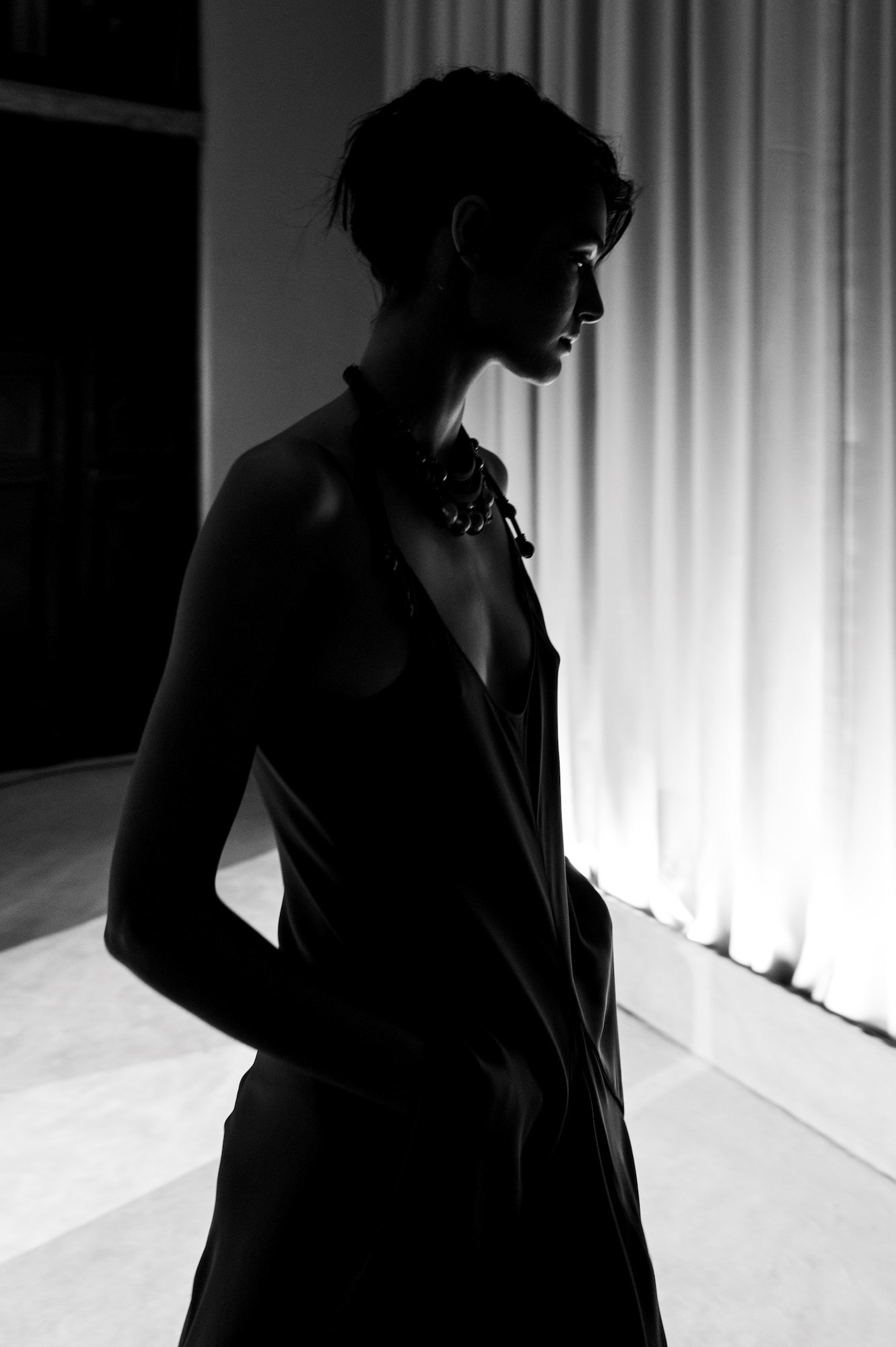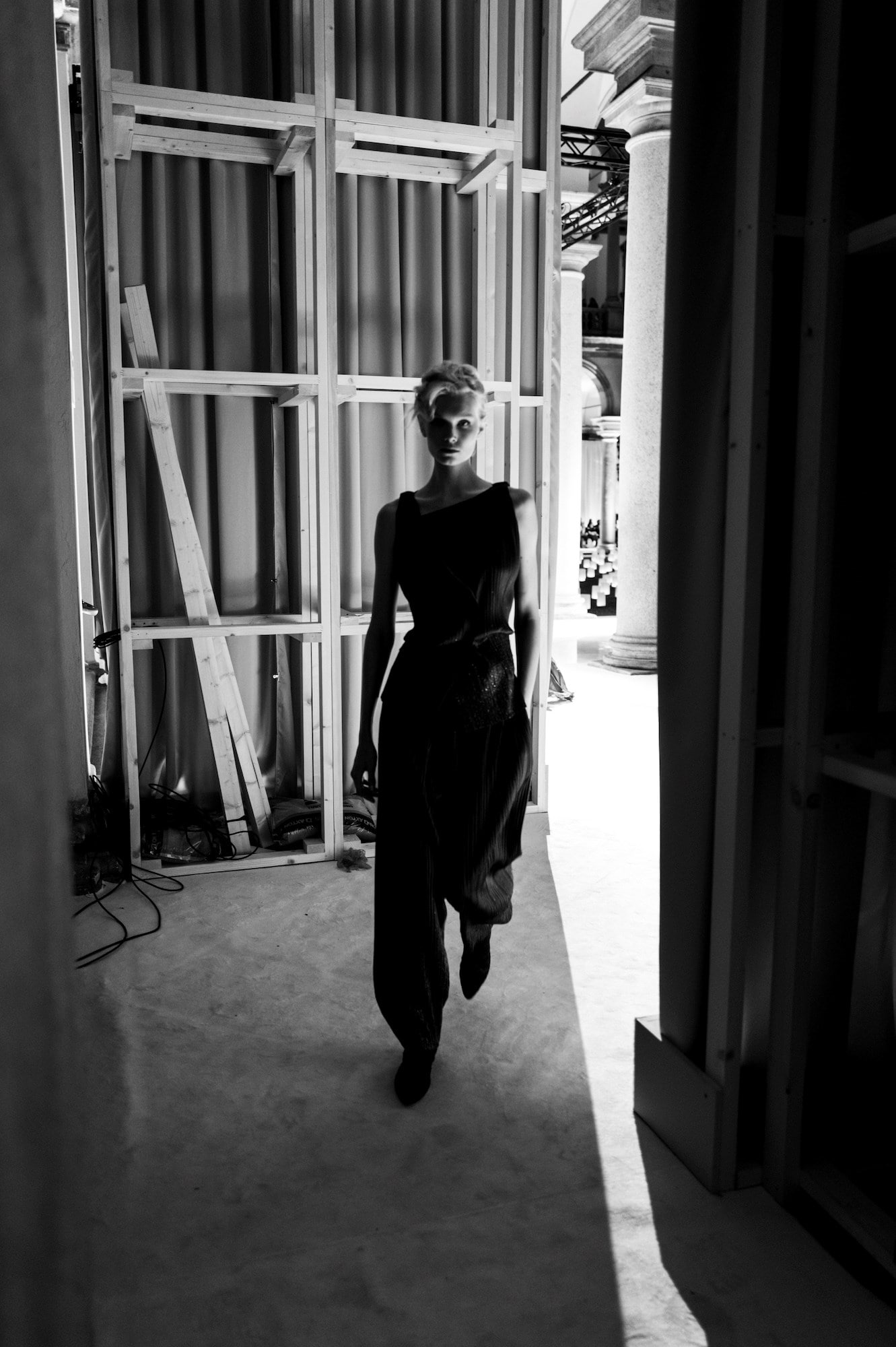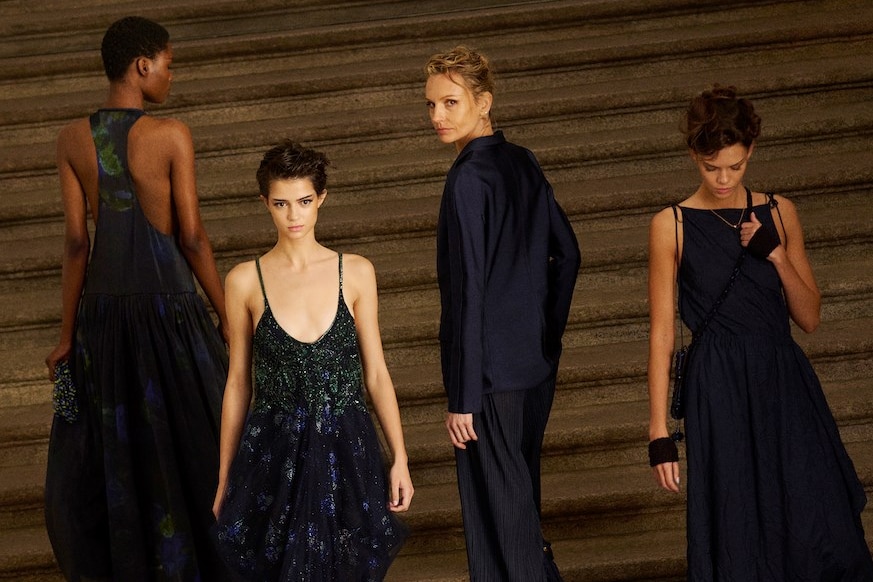
Rewrite
Lead ImageGiorgio Armani Spring/Summer 2026Photography by Ryan McGinley. Courtesy of Armani
Giorgio Armani’s show on Sunday night was a strange double commemoration. It was originally intended as a grand hurrah to celebrate the 50th anniversary of the label, staged within the courtyard of the Pinacoteca di Brera, the Milanese art museum where Armani’s clothes were exceptionally installed alongside masterpieces by Piero della Francesca, Caravaggio and Tintoretto, curated by the designer himself. It was the first time the museum had ever devoted its spaces to fashion. Then, Giorgio Armani died on September 4, and the celebration morphed into a commemoration of a life and legacy weighted with an additional, exceptional poignancy. Armani himself curated the exhibition at the Pinacoteca, and completed work on this collection over summer, before he passed. They were his last creative acts – one a proposition of the future, the other a reconsideration of his own past.
If his Spring/Summer 2026 show demonstrated the recalcitrant contemporary Armani – his stubborn refusal to follow the flow of fashion, which originally marked him as a radical, industry-shifting figure, but which latterly often edged his clothes out of relevance in a panorama wider than his loyal client base – the exhibition demonstrated the revolution of his work. It spanned back through his work in the 1980s – a golden age of audiences blown away by Armani’s innovation, and a period, oddly, Armani was loath to resist. Here, Armani installed them at the centre of rooms like sculptures in greige cloth – including the outfit created for Richard Gere in American Gigolo, still a blueprint (well, beigeprint) of masculine elegance. Alongside were clothes from the 90s and 2000s, up until today. Armani selected his greatest hits, for sure, and they scrambled together, making a mess of chronology. You had no idea what decade anything came from. He once told me, “If what I created 50 years ago is still appreciated by an audience that wasn’t even born at the time, this is the ultimate reward and the confirmation of my constant pursuit of timeless style.” Kudos to that.
It made you think back, in turn. I remember my earliest Armani fashion experiences. When I began to attend shows, almost 20 years ago, Armani had already lost some of its lustre. The invitation for each show, staged in a specially built amphitheatre by the Japanese minimalist architect Tadao Ando – like Armani, self-taught – was a seating plan, with your appropriate place in the hierarchy firmly circled. At the start, mine was obviously at the back.
I was privileged, once, to see an Armani fashion show from the bowels of that concrete citadel – that is, backstage. It was in 2014, just shy of Armani’s fortieth anniversary, when the designer was no longer at the height of his influence on global style, but was still a powerful industry figure, single handedly helming a multi-billion euro empire as both CEO and creative director, although I doubt he would ever use that term. You perhaps didn’t realise how single handed that was. Backstage with him was a singular experience. Armani himself did absolutely everything. Everything. The models were lined up against a partition wall; about 20 feet away was Armani’s team, a thronging mass of bodies of all ages. In between was just Armani himself, no stylists, no assistants. He adjusted everything, on every model, barking out instructions. The retinue of staff flowed as one – when Armani called for scissors, they scrambled as a group to fetch them. Armani called for seamstresses to sew down the pleats on an organza evening gown, flattening them against the model himself. At one point, his voice rang above the hubbub, “Basta, photo.” He expelled the backstage photographers. Indeed, he took on duties, it seems, of producer, stylist, even makeup artist – his long-term collaborator Linda Cantello once told me that Armani used to insist on touching up every single model’s makeup himself, with his own hands. Perhaps to give himself ownership of every look.
I got to interview Armani a bunch of times – sometimes via email, occasionally in person. Email was, obviously, a colder experience, Armani’s responses compressed into considered soundbites. In person, Armani was steely and notoriously difficult to pin down, as he was dedicated to work. Getting him to sit still and talk for 35 minutes was an achievement. He had better ways to spend his time than explaining his work – namely, doing it.
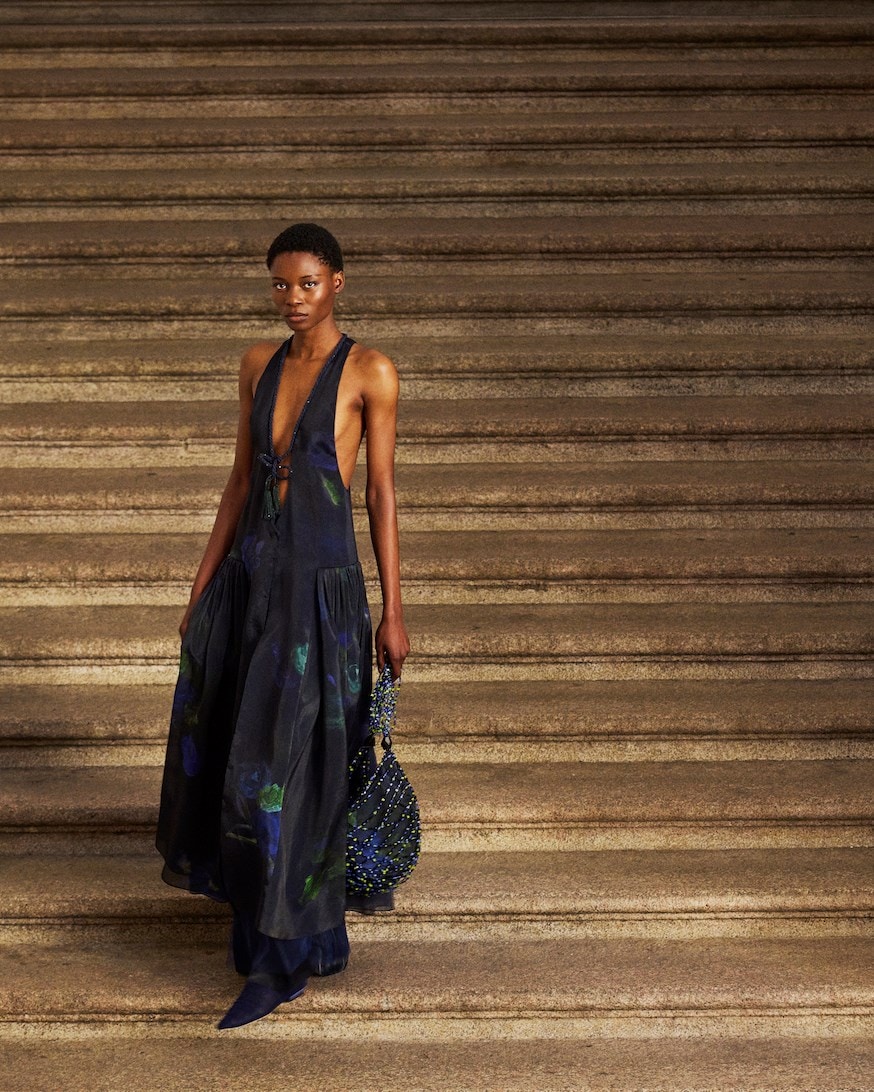
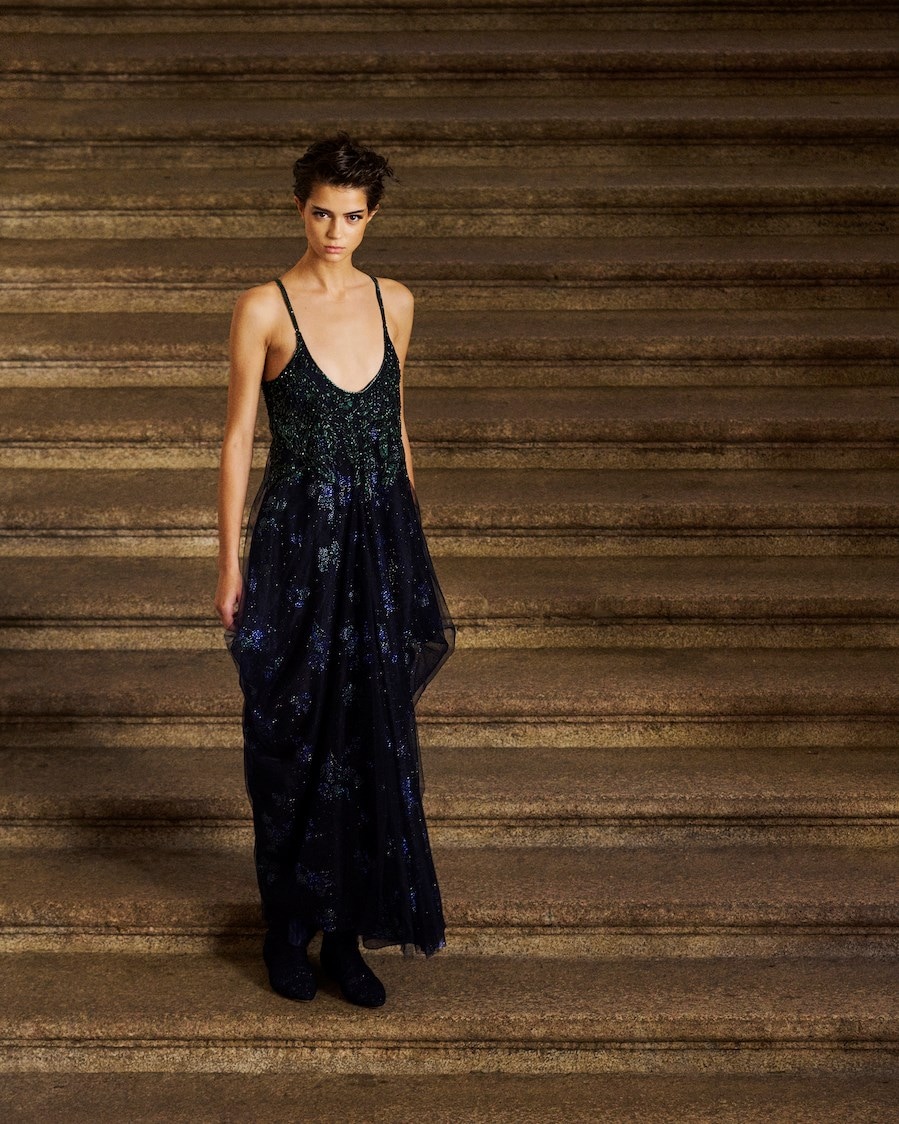
But in person, sometimes, Armani could be nostalgic. He spoke once, eloquently, about his experience during wartime, and immediately after. “The hardest thing and the most important thing was to try to eat. And not those things that you had to eat, or be forced to eat, during war, which were really terrible. Or the pleasure of seeing a film, those were the things I remember. Walking outside in the evening and being able to see the lights of the sky, without having a curfew. Those were things that were very important, not necessarily having money, making things. But being able to simply go outside into the countryside. Before, it was impossible. Having that freedom to venture out of the city, which was being bombed, it was an incredible pleasure. Small things.” That, for me, reframed the Armani empire – an empire that included not just clothes, but food, homes, and his collaboration with cinema. I’ve gone on, constantly, about Armani/Fiori – the line of floristry arrangements, of blooms literally bent to Armani’s will in complex and starkly beautiful ikebana arrangements. Nature nurtured, made better.
Armani’s world isn’t just a complex fashion empire – it’s deeper, a universe of perfection and luxury, created from a childhood of hardship and want. There’s a deep, incurable romance to that. Armani was, perhaps, romantic – he was certainly a man in pursuit, ceaselessly, of his own vision of the ideal, of beauty. What a legacy. What a style.
in HTML format, including tags, to make it appealing and easy to read for Japanese-speaking readers aged 20 to 40 interested in fashion. Organize the content with appropriate headings and subheadings (h1, h2, h3, h4, h5, h6), translating all text, including headings, into Japanese. Retain any existing
tags from
Lead ImageGiorgio Armani Spring/Summer 2026Photography by Ryan McGinley. Courtesy of Armani
Giorgio Armani’s show on Sunday night was a strange double commemoration. It was originally intended as a grand hurrah to celebrate the 50th anniversary of the label, staged within the courtyard of the Pinacoteca di Brera, the Milanese art museum where Armani’s clothes were exceptionally installed alongside masterpieces by Piero della Francesca, Caravaggio and Tintoretto, curated by the designer himself. It was the first time the museum had ever devoted its spaces to fashion. Then, Giorgio Armani died on September 4, and the celebration morphed into a commemoration of a life and legacy weighted with an additional, exceptional poignancy. Armani himself curated the exhibition at the Pinacoteca, and completed work on this collection over summer, before he passed. They were his last creative acts – one a proposition of the future, the other a reconsideration of his own past.
If his Spring/Summer 2026 show demonstrated the recalcitrant contemporary Armani – his stubborn refusal to follow the flow of fashion, which originally marked him as a radical, industry-shifting figure, but which latterly often edged his clothes out of relevance in a panorama wider than his loyal client base – the exhibition demonstrated the revolution of his work. It spanned back through his work in the 1980s – a golden age of audiences blown away by Armani’s innovation, and a period, oddly, Armani was loath to resist. Here, Armani installed them at the centre of rooms like sculptures in greige cloth – including the outfit created for Richard Gere in American Gigolo, still a blueprint (well, beigeprint) of masculine elegance. Alongside were clothes from the 90s and 2000s, up until today. Armani selected his greatest hits, for sure, and they scrambled together, making a mess of chronology. You had no idea what decade anything came from. He once told me, “If what I created 50 years ago is still appreciated by an audience that wasn’t even born at the time, this is the ultimate reward and the confirmation of my constant pursuit of timeless style.” Kudos to that.
It made you think back, in turn. I remember my earliest Armani fashion experiences. When I began to attend shows, almost 20 years ago, Armani had already lost some of its lustre. The invitation for each show, staged in a specially built amphitheatre by the Japanese minimalist architect Tadao Ando – like Armani, self-taught – was a seating plan, with your appropriate place in the hierarchy firmly circled. At the start, mine was obviously at the back.
I was privileged, once, to see an Armani fashion show from the bowels of that concrete citadel – that is, backstage. It was in 2014, just shy of Armani’s fortieth anniversary, when the designer was no longer at the height of his influence on global style, but was still a powerful industry figure, single handedly helming a multi-billion euro empire as both CEO and creative director, although I doubt he would ever use that term. You perhaps didn’t realise how single handed that was. Backstage with him was a singular experience. Armani himself did absolutely everything. Everything. The models were lined up against a partition wall; about 20 feet away was Armani’s team, a thronging mass of bodies of all ages. In between was just Armani himself, no stylists, no assistants. He adjusted everything, on every model, barking out instructions. The retinue of staff flowed as one – when Armani called for scissors, they scrambled as a group to fetch them. Armani called for seamstresses to sew down the pleats on an organza evening gown, flattening them against the model himself. At one point, his voice rang above the hubbub, “Basta, photo.” He expelled the backstage photographers. Indeed, he took on duties, it seems, of producer, stylist, even makeup artist – his long-term collaborator Linda Cantello once told me that Armani used to insist on touching up every single model’s makeup himself, with his own hands. Perhaps to give himself ownership of every look.
I got to interview Armani a bunch of times – sometimes via email, occasionally in person. Email was, obviously, a colder experience, Armani’s responses compressed into considered soundbites. In person, Armani was steely and notoriously difficult to pin down, as he was dedicated to work. Getting him to sit still and talk for 35 minutes was an achievement. He had better ways to spend his time than explaining his work – namely, doing it.


But in person, sometimes, Armani could be nostalgic. He spoke once, eloquently, about his experience during wartime, and immediately after. “The hardest thing and the most important thing was to try to eat. And not those things that you had to eat, or be forced to eat, during war, which were really terrible. Or the pleasure of seeing a film, those were the things I remember. Walking outside in the evening and being able to see the lights of the sky, without having a curfew. Those were things that were very important, not necessarily having money, making things. But being able to simply go outside into the countryside. Before, it was impossible. Having that freedom to venture out of the city, which was being bombed, it was an incredible pleasure. Small things.” That, for me, reframed the Armani empire – an empire that included not just clothes, but food, homes, and his collaboration with cinema. I’ve gone on, constantly, about Armani/Fiori – the line of floristry arrangements, of blooms literally bent to Armani’s will in complex and starkly beautiful ikebana arrangements. Nature nurtured, made better.
Armani’s world isn’t just a complex fashion empire – it’s deeper, a universe of perfection and luxury, created from a childhood of hardship and want. There’s a deep, incurable romance to that. Armani was, perhaps, romantic – he was certainly a man in pursuit, ceaselessly, of his own vision of the ideal, of beauty. What a legacy. What a style.
and integrate them seamlessly into the new content without adding new tags. Ensure the new content is fashion-related, written entirely in Japanese, and approximately 1500 words. Conclude with a “結論” section and a well-formatted “よくある質問” section. Avoid including an introduction or a note explaining the process.
